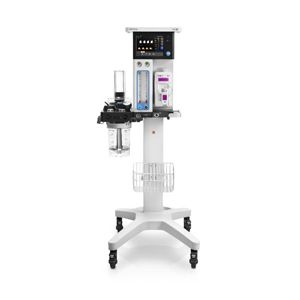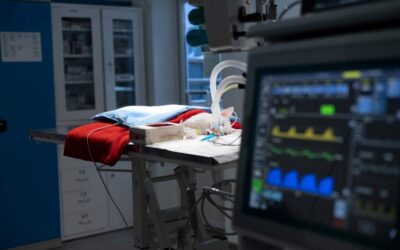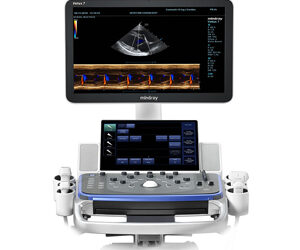Selecting the right veterinary ultrasound machine is a significant decision for any clinic or mobile veterinary practice. With technology advancing rapidly and options spanning a wide range of features and prices, it can be challenging to determine which system best suits your needs. Whether you’re a general practitioner, a specialist in reproductive services, or a mobile vet handling farm calls, having the right ultrasound unit can significantly enhance diagnostic capabilities, improve patient outcomes, and boost operational efficiency.
This comprehensive guide breaks down everything you need to consider when choosing a veterinary ultrasound system, from clinical use-cases and animal types to image quality, portability, and budget constraints.
Understand Your Clinical Needs
Before evaluating specific machines or brands, it’s essential to define how you intend to use the ultrasound system.
- Types of Animals Treated
- Small animals: Dogs, cats, and exotic pets often require high-resolution imaging with micro-convex or linear probes.
- Large animals: Horses, cows, and pigs need deeper penetration and more robust transducers.
- Mixed practice: A clinic treating both large and small animals should consider systems with versatile probe compatibility.
- Diagnostic Procedures Performed
- Abdominal scanning: Common in small animal practices for liver, kidney, bladder, and GI assessments.
- Cardiology: Requires advanced Doppler imaging and high frame rates to capture heart movement.
- Reproductive work: Pregnancy checks in both large and small animals benefit from curved-array probes and good depth penetration.
- Emergency assessments (FAST scans): Portable, fast-booting machines are essential in trauma or critical care settings.
- Musculoskeletal evaluations: High-frequency linear probes are necessary for detailed tendon and joint imaging.
By understanding these requirements, you can filter out systems that may not offer the features or performance needed for your day-to-day tasks.
Choose the Right Form Factor
Ultrasound machines come in several hardware formats, each with advantages and limitations.
- Handheld Ultrasound Devices These are compact systems that connect wirelessly or via USB to a smartphone or tablet.
- Pros: Highly portable, easy to transport, ideal for fieldwork and mobile practitioners.
- Cons: Limited image resolution, fewer software features, shorter battery life, often limited probe support.
- Best for: Point-of-care scanning, emergency use, quick assessments in the field.
- Laptop-Style Ultrasound Machines These are more powerful than handhelds and offer more software capabilities in a compact package.
- Pros: Better image quality, more customizable settings, often include color Doppler.
- Cons: Less robust than cart-based systems, still require external support for multiple probe use.
- Best for: Clinics that need mobility and mid-tier functionality.
- Cart-Based Ultrasound Systems Traditional full-size machines with wheels for in-clinic use.
- Pros: Advanced image quality, large display, built-in storage, multiple transducer ports.
- Cons: Lack of portability, higher cost, requires dedicated space.
- Best for: High-volume clinics, specialty practices, and referral centers.
Evaluate Image Quality
Image quality is one of the most important factors when choosing an ultrasound machine. It directly impacts diagnostic accuracy and clinician confidence.
- Spatial and Contrast Resolution
- Better resolution helps detect smaller abnormalities.
- Look for systems that allow image optimization, zoom features, and customizable gain controls.
- Frequency Range
- High-frequency probes (10–16 MHz) are ideal for superficial structures (muscle, eyes, tendons).
- Low-frequency probes (2–5 MHz) penetrate deeper for abdominal or reproductive exams in large animals.
- Machines that support a wide range of probes offer more flexibility.
- Imaging Modes
- B-mode (2D): The most common mode for structural evaluation.
- M-mode: Essential for cardiac assessments.
- Color Doppler: Shows blood flow within vessels and organs.
- Pulse Wave and Continuous Wave Doppler: Important for cardiology.
- Elastography and 3D/4D Imaging: Optional in high-end systems for advanced diagnostics.
Transducer (Probe) Selection
The ultrasound probe is what determines the quality of the signal received from the patient. Different clinical applications require specific types.
- Micro-convex Probes
- Compact footprint, useful for small animal abdominal scans.
- Linear Probes
- High-frequency, high-resolution imaging for tendons, superficial masses, and vascular structures.
- Convex or Curved Array Probes
- Lower frequency, suited for general-purpose abdominal or large animal use.
- Phased Array Probes
- Primarily used in cardiac applications due to high frame rates and smaller footprint.
Make sure the machine supports multiple probe types and has ports to avoid constantly swapping connections.
Portability vs. Performance
If your practice is mobile, then portability and durability become top priorities. Conversely, a high-volume hospital will prioritize performance and throughput.
Considerations for Mobile Use:
- Weight and carrying options.
- Battery life.
- Probe and device durability.
- Wi-Fi or cloud-based image storage for off-site access.
Considerations for In-Clinic Use:
- Monitor size and clarity.
- Integration with EMR systems.
- Storage capacity for saved studies.
- Multi-user capabilities and network access.
Software & Workflow Features
A great hardware system still needs efficient software tools to optimize workflow and improve patient management.
- Image Storage and Transfer
- DICOM compatibility for secure transmission to PACS or EMRs.
- USB or SD card storage for external access.
- Onboard storage should be at least 500GB for high-use environments.
- User Interface
- Touchscreen vs. physical buttons.
- Customizable presets and workflow automation.
- Quick boot-up time and intuitive navigation.
- Reporting Features
- Ability to annotate images.
- Built-in report generation.
- Measurements and calculations tailored for veterinary species.
Durability & Cleaning
Veterinary environments—especially field and barn work—are often rougher than human clinics. Your equipment needs to be resilient.
Durability Factors:
- Water and dust resistance (IP ratings).
- Drop resistance.
- Reinforced probe cables.
Cleaning Considerations:
- Compatibility with common disinfectants.
- Smooth, sealed interfaces to prevent fluid ingress.
Training, Support & Brand Reputation
Not all machines are equally supported. Ensure that the system you choose comes with adequate training and long-term service options.
- Training & Onboarding
- Does the vendor offer virtual or in-person training?
- Are there resources specific to veterinary use?
- Technical Support
- Is technical support available in your time zone?
- Is there a warranty or loaner program?
- Brand Reliability
- Research how long the brand has served the veterinary market.
- Look for consistent firmware updates and new probe releases.
Budget and Return on Investment (ROI)
Ultrasound systems range from under $5,000 for handheld units to over $60,000 for high-end cart-based systems.
Price Considerations:
- Hardware cost.
- Probe upgrades.
- Software licenses.
- Service contracts and extended warranties.
ROI Questions to Ask:
- How many scans per week do you expect?
- What can you reasonably charge per scan?
- How long will it take to break even?
A lower-cost system may be sufficient if your needs are occasional or mobile. High-use clinics will benefit from investing in mid-to-premium tier systems.
Financing Options and Ownership Models
Given the potentially high cost of some veterinary ultrasound systems, it’s worth exploring the different ownership and financing models available.
- Outright Purchase
- Best for clinics with available capital.
- Offers full control and no monthly payments.
- May provide tax advantages depending on your jurisdiction.
- Lease-to-Own
- Allows you to spread the cost over time.
- Provides access to high-end systems with lower upfront investment.
- Often includes maintenance or service in the lease.
- Equipment Rental
- Ideal for short-term or trial use.
- Enables flexibility to test different models before committing.
- Costs may be higher long-term but lower risk initially.
Work with a vendor that offers flexible payment options and clearly defined terms to avoid surprise expenses.
Customization and Modular Expansion
Veterinary practices evolve, and your imaging needs may grow over time. That’s why choosing a system with modular features can be a strategic long-term move.
Modular System Benefits:
- Ability to add probes or software packages as your services expand.
- Upgradeable hardware for improved longevity.
- Optional add-ons like ECG integration, telemedicine compatibility, and AI-powered diagnostics.
By planning for future use, you reduce the risk of needing a full system replacement within just a few years.
Environmental and Regulatory Considerations
Some clinics must adhere to local or federal regulations regarding electronic medical equipment.
Points to Check:
- Does the device comply with veterinary imaging standards in your region?
- Are there any waste disposal or recycling programs offered by the manufacturer?
- Is the machine energy-efficient, especially for mobile units with limited power availability?
Investing in a compliant, environmentally responsible system supports both ethical practice and operational efficiency.
Client Perception and Competitive Advantage
Veterinary ultrasound machines can also impact how clients perceive your clinic.
Why It Matters:
- Offering ultrasound on-site increases client trust and convenience.
- Clear visuals help explain diagnoses to pet owners, increasing compliance with treatment plans.
- Cutting-edge equipment reinforces your clinic’s reputation as modern and well-equipped.
For practices seeking to differentiate themselves in a competitive market, ultrasound imaging can be a compelling advantage.
Common Mistakes to Avoid
- Focusing Only on Price A budget-friendly system may lack essential features or durability, costing more in the long run.
- Ignoring Probe Compatibility Not all machines support a wide variety of probes. Make sure your needs today—and tomorrow—are covered.
- Overlooking Service Availability Even the best machines need support. A vendor with slow or limited service access can disrupt operations.
- Neglecting Staff Training Even a top-tier machine is ineffective without proper user training. Ensure onboarding is part of the package.
The Value of a Demonstration
Before purchasing, request a live or virtual demonstration.
What to Look For:
- Image quality on your typical cases (species and size).
- Ease of use and navigation.
- Probe ergonomics and machine portability.
- Speed and reliability of features such as Doppler or measurement tools.
Testing the system in a real-world context is one of the most effective ways to gauge its suitability.
Choosing the Best Veterinary Ultrasound Machine
Choosing the right veterinary ultrasound machine is about aligning technology with your practice’s unique clinical and operational demands. Whether you’re doing pregnancy checks on a farm, cardiac scans in a small animal clinic, or fast triage in an emergency room, the right machine becomes an essential tool in your diagnostic arsenal.
At BOMImed, we offer a curated selection of veterinary ultrasound systems designed to support a wide range of animal healthcare providers. Our team can walk you through the selection process, help match systems to your budget, and provide the post-purchase support your clinic deserves.














